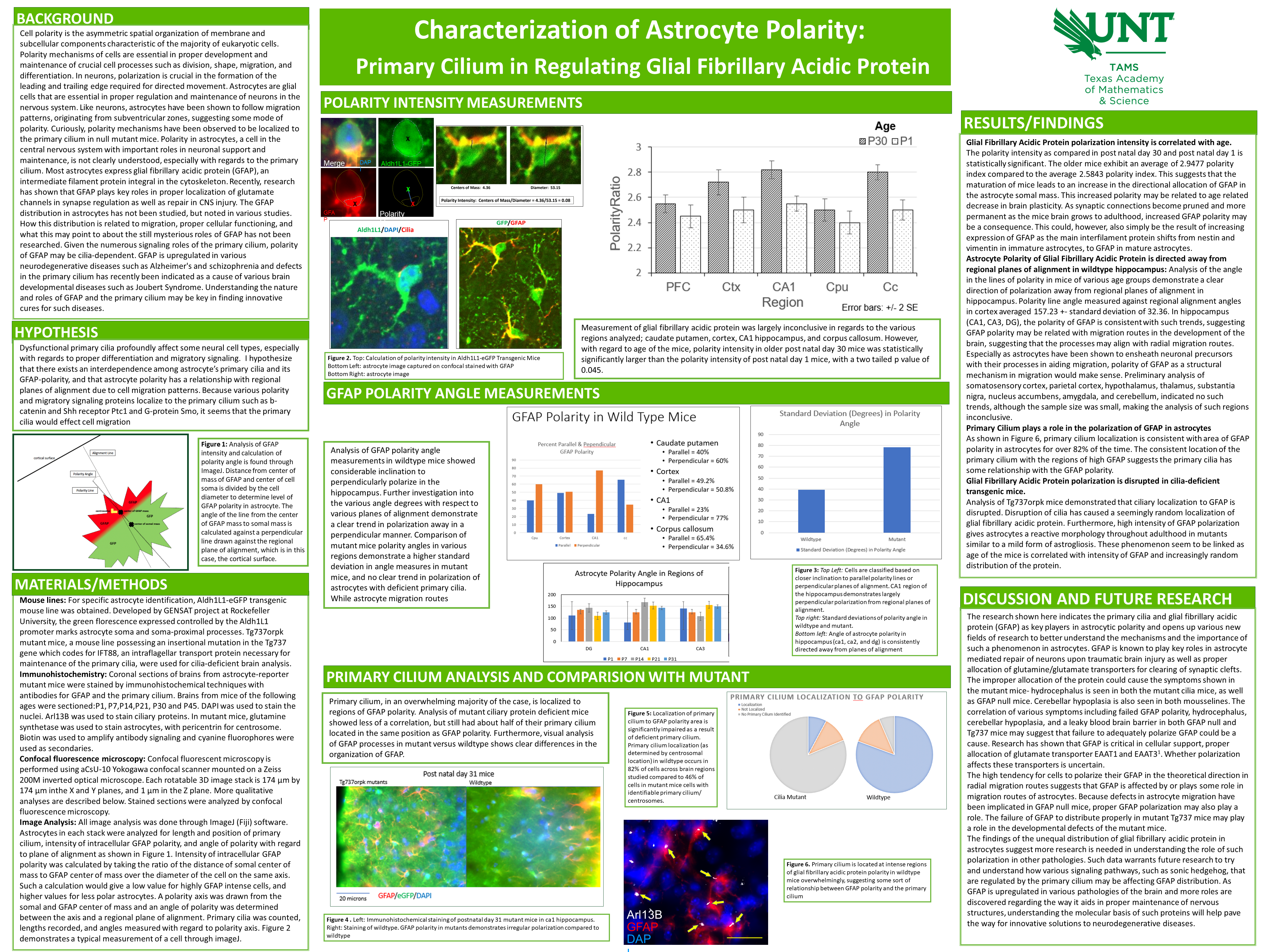First Name:
GeoffreyLast Name:
ZhangMentor:
Dr. Jannon FuchsAbstract:
Cell polarity is the intrinsic asymmetry present in almost all eukaryotic cells critical to cell division, migration, and differentiation. While the polarity of other neural cell types such as neurons are well characterized, polarity mechanisms in such glial cells as astrocytes are not well-defined, especially in development. We have comprehensively studied the nature of GFAP polarity in astrocytes across spatiotemporal distributions and the primary cilium in relation. Astrocytes of Aldh1L1 transgenic reporter mice were used to characterize polarity with regard to age and brain region. Tg737orpk knockout mice, a mouse line with characteristically deficient primary cilia, were analyzed to investigate the primary cilia in regulating polarity. Through immunohistochemistry and fluorescence microscopy, we found that GFAP in only certain regions of the brain such as the hippocampus showed substantial development of polarity across post-natal development. In hippocampus CA1 and anterior corpus callosum, we found GFAP polarity and the primary cilium both exhibited developmental selective orientation with respect to brain architecture. In mutant mice, in which astrocytes lack primary cilia, GFAP polarity was observed and did not vary in magnitude. Furthermore, we found that polarization of GFAP in wild-type mice was localized at primary cilium, while polarization in cilia-deficient mice was scattered. Taken together, our results suggest a heterogeneity of astrocytes in polarity mechanism, and indicate the primary cilium as a factor in the correct polarization of GFAP. These findings reveal more on the development of astrocytes and may help in explaining traits characteristic of patients with ciliopathies such as cerebellar hypoplasia.
Poster:

Year:
2021



